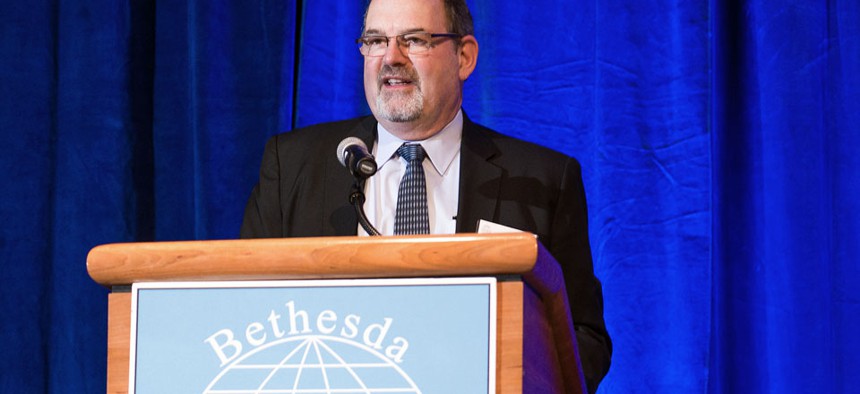Tony Scott on USDS: Influx of New Tech Talent a Balancing Act for Agencies

Flickr user Bethesda AFCEA
Making sure new digital teams are seamlessly integrated into agency operations has some officials fearing a potential culture clash.
By this time next year -- if the Obama administration has its way -- the largest federal agencies will be onboarding new teams of techies working on short-term assignments to help sort out digital projects that have often tangled up the feds.
White House officials are enticing Silicon Valley transplants -- and other federal outsiders -- to consider coming to work for Uncle Sam as part of the U.S. Digital Service, headed by former Googler Mikey Dickerson.
But making sure the new teams are seamlessly integrated into agency operations probably won’t be a cakewalk and has some officials fearing a potential culture clash.
"I think it's one of the trickier things that we have to do,” said Tony Scott, the new federal chief information officer, himself recently arrived from the West Coast where he served as CIO at the virtualization firm VMware.
Scott spoke to reporters last week after an address at a Data Transparency Coalition event.
“I think there is a danger . . . that if we do it the wrong way, they'll be the haves and the have-nots and you end up with a war,” he said, citing his years in private industry when the Internet first started to revolutionize the way companies did business.
"Everybody went out, formed new teams, created separate business units and said, 'Oh, you're the smart guys, everybody else is dumb,’” said Scott, an industry veteran with stints as CIO of Microsoft and Disney and as chief technology officer at General Motors.
In the long run, that divided the staff and eventually the organization’s “antibodies” rejected the newcomers.
"We can't do that,” Scott said. “We've got to make sure these are integrated and collaborative right from the get-go,” Scott said.
For now, the Digital Service team is operating out of a White House office as well as in pilot mode at a few agencies. The General Services Administration’s 18F digital consultancy is a sister organization of sorts.
“I have a lot of sympathy for the folks who've been in the agencies and have been keeping the engines going,” Scott said. The pilot teams who have been “surgically” deployed into agencies, so far, have been successful, he added.
“Our experience, so far, is it gives everybody on the team, old and new alike, the opportunity to do something different than what we've been doing,” Scott said of those initial pilots. “In most cases, they've been embraced and [people say], ‘Thank God, we now have an opportunity to do things we think they really ought to be done versus the way we've had to.”
Meanwhile, USDS' recruiting efforts continue apace.
The 2016 White House budget proposal envisions embedding in-house digital teams at the 25 largest agencies, which will eventually grow the ranks of digital staffers governmentwide to more than 500.
Earlier this month, Dickerson took his recruiting pitch to Austin, Texas, for the South by Southwest tech conference March 16. His full remarks were posted to the OMB blog last week under the heading “Why We Need You in Government.”
Dickerson recounted his experiences working on the HealthCare.gov rescue team for three months, helping to pull the site back from the brink of utter failure and working such long days and sleeping so little in the duration that he began to suffer from hallucinations, he said.
“Some of you, not all of you, are working right now on another app for people to share pictures of food or a social network for dogs,” he told attendees. “I am here to tell you that your country has a better use for your talents.”
NEXT STORY: Fed banking on new data sources





